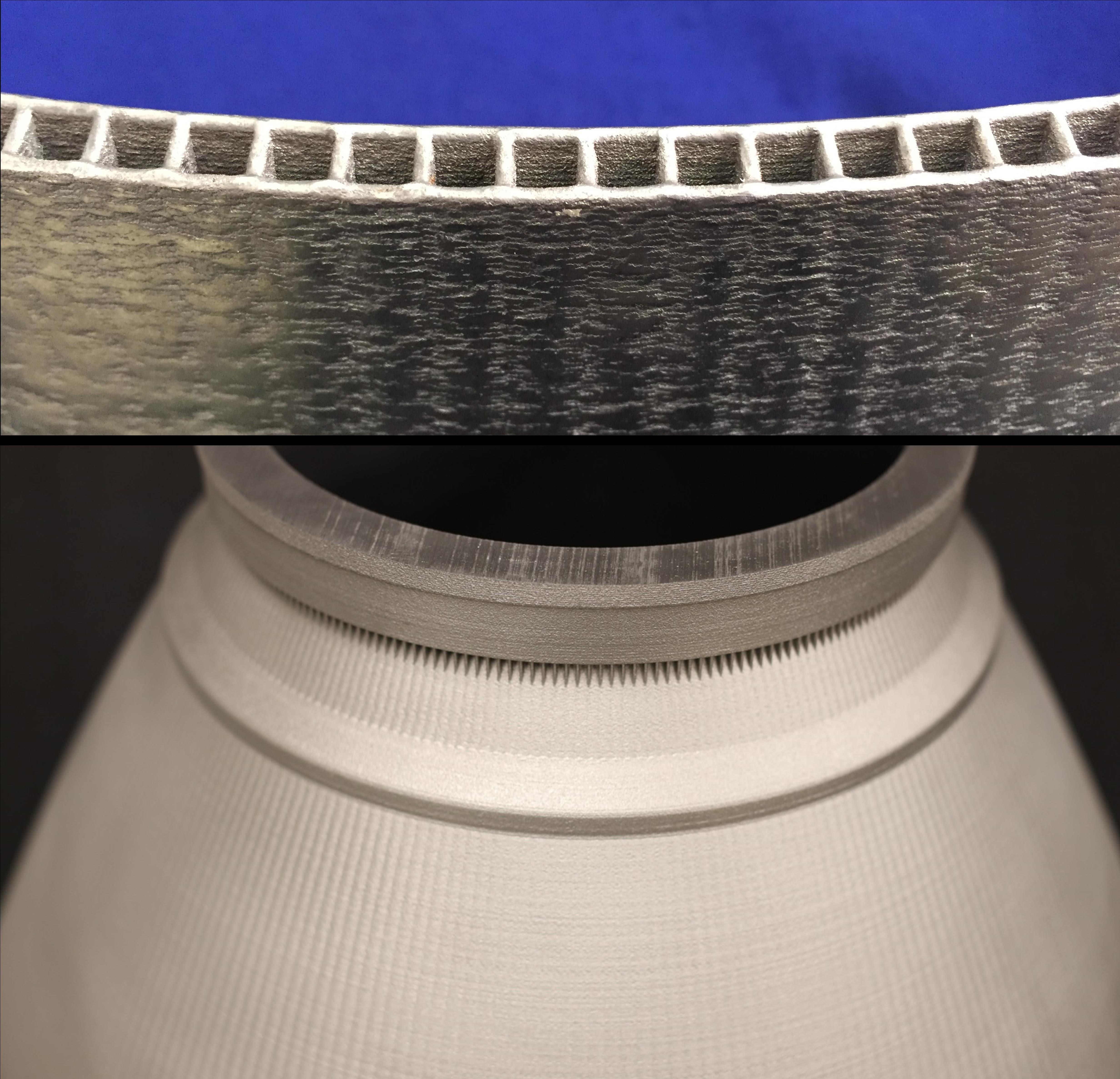
NASA has formed a new project entitled Rapid Analysis and Manufacturing Propulsion Technology (RAMPT) to help develop ways to 3D print metal rocket engine parts using blown powder directed energy deposition.
According to the association, using this method could reduce costs and lead times when producing large, complex engine components such as nozzles and combustion chambers.
‘This technology advancement is significant, as it allows us to produce the most difficult and expensive rocket engine parts for a lower price tag than in the past,’ said Drew Hope, manager of NASA’s Game Changing Development Program, which funds the RAMPT project. ‘Further, it will allow companies within and outside of the aerospace industry to do the same and apply this manufacturing technology to the medical, transportation, and infrastructure industries.’
Blown powder directed energy deposition involves integrating a blown powder nozzle and laser optics into a print-head, which is attached to a robot. NASA says that it can be used to print complex parts such as engine nozzles with internal coolant channels.
‘It’s a challenging process to manufacture the nozzles traditionally, and it can take a very long time,’ said Paul Gradl, RAMPT co-principal investigator. ‘Blown powder directed energy deposition additive manufacturing allows us to create very large-scale components with complex internal features that were not previously possible. We’re able to significantly reduce the time and the cost associated with the fabrication of channel-cooled nozzles and other critical rocket components.’
The project team reportedly used the technique to produce a large nozzle 40 inches in diameter and standing 38 inches tall, with integrated cooling channels. This nozzle was fabricated in just 30 days compared with nearly one-year using traditional welding methods, NASA said.
NASA’s Space Launch System rocket team next plan to use the technique to build and evaluate a channel-cooled nozzle up to 5 feet in diameter and almost 7 feet tall.
This story uses material from NASA, with editorial changes made by Materials Today. The views expressed in this article do not necessarily represent those of Elsevier.



